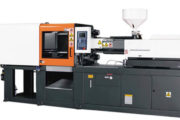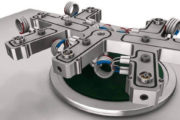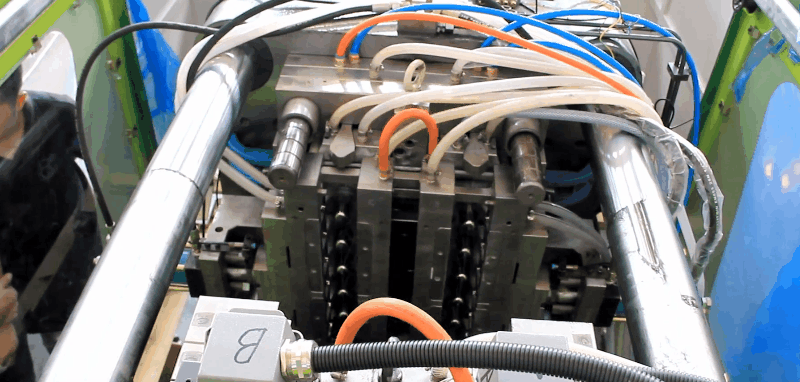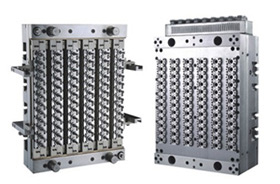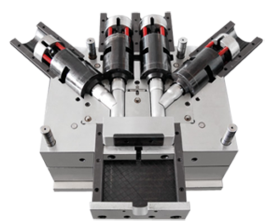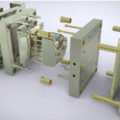Plastic mold is an abbreviation of molds includes compress molding, extrusion molding, injection molding, blow molding and low foam molding. It is a tool to make a fixed shape products with kinds of plastics. The tool is mostly have two parts called male mold and female mold. There is some empty space after the male mold and female mold closed. That is the plastic product`s shape. We put some melt plastic to fill the empty space and then we got a plastic part after it was cured. Please refer to below picture to help you understand the plastic mold definition.
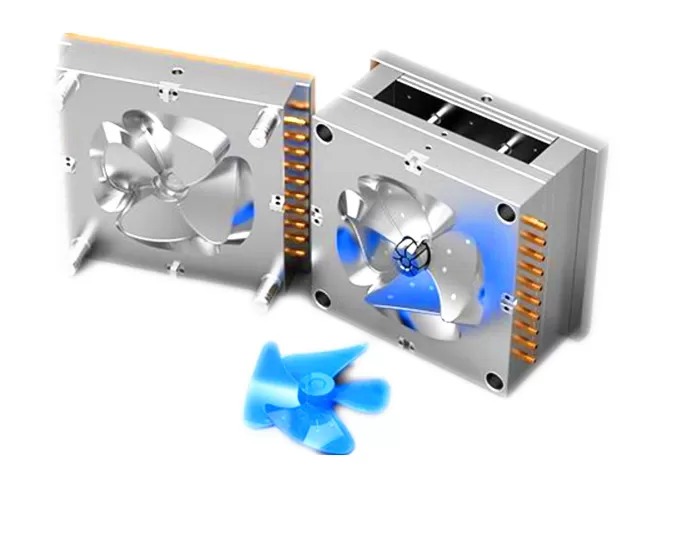
A series of plastic parts with different shapes and different sizes can be produce by changing the mold convex and concave molds and the auxiliary molding system.
Plastic molds is the base factor of modern industry, and the release of new products will involve plastics parts.
Plastic Mold Structure
Plastic molds mainly includes a concave mold with a variable cavity composed of a concave mold combined substrate, a concave mold assembly and a concave mold combined card board, a convex mold combined substrate, a convex mold assembly, a convex mold combined card board, a cavity cutting component and A punch with a variable core composed of side-section combined plates.
In order to improve the performance of plastics, it is necessary to add various auxiliary materials to the polymer, such as fillers, plasticizers, lubricants, stabilizers, colorants, etc., to improve plastics performance.
1. Synthetic resin is the most important component of plastic, and its content in plastic is generally 40% to 100%. Because of the large content, and the nature of the resin often determines the nature of the plastic, people often think of resin as a synonym for plastic. For example, mix polyvinyl chloride resin with polyvinyl chloride plastic, phenolic resin and phenolic plastic. In fact, resin and plastic are two different concepts. Resin is an unprocessed raw polymer, which is not only used to make plastics, but also as a raw material for coatings, adhesives and synthetic fibers. In addition to a very small part of plastic containing 100% resin, most plastics, in addition to the main component resin, also need to add other substances.
2. Filler filler is also called filler, which can improve the strength and heat resistance of plastics and reduce costs. For example, adding wood powder to phenolic resin can greatly reduce the cost, making phenolic plastic one of the cheapest plastics, while also significantly improving the mechanical strength. Fillers can be divided into organic fillers and inorganic fillers, the former such as wood flour, rags, paper and various fabric fibers, etc., the latter such as glass fiber, diatomaceous earth, asbestos, carbon black and so on.
3. Plasticizers Plasticizers can increase the plasticity and flexibility of plastics, reduce brittleness, and make plastics easier to process. Plasticizers are generally miscible with resins, non-toxic, odorless, light- and heat-stable high-boiling organic compounds, and the most commonly used are phthalates. For example, in the production of PVC plastics, soft PVC plastics can be obtained if more plasticizers are added, and hard PVC plastics can be obtained if no or less plasticizers are added (amount <10%). .
4. Stabilizer In order to prevent the synthetic resin from being decomposed and destroyed by light and heat during processing and use, and to extend the service life, a stabilizer should be added to the plastic. Commonly used are stearate and epoxy resin.
5. Colorants Colorants can make plastics have various bright and beautiful colors. Commonly used organic dyes and inorganic pigments as colorants.
6. Lubricant The role of the lubricant is to prevent the plastic from sticking to the metal mold during molding, and at the same time make the plastic surface smooth and beautiful. Commonly used lubricants include stearic acid and its calcium and magnesium salts. In addition to the above additives, flame retardants, foaming agents, antistatic agents, etc. can also be added to the plastic.
Plastic Molds Application
Development of Plastic Molds
The various tools and products used in our daily production and life range from the base of the machine tool, the shell of the fuselage, to the shell of a screw head, buttons, and various household appliances. They all have a close relationship with the mold. The shape of the mold determines the shape of these products, and the processing quality and precision of the mold determine the quality of these products. Because of the different materials, appearance, specifications and uses of various products, the molds are divided into non-plastic molds such as casting molds, forging molds, die casting molds, stamping molds, and plastic molds.
In recent years, with the rapid development of the plastic industry and the continuous improvement of strength and precision of general and engineering plastics, the application range of plastic products is also expanding, such as: household appliances, instruments, construction equipment, automotive industry, In many fields such as daily hardware, the proportion of plastic products is rapidly increasing. A properly designed plastic part can often replace multiple traditional metal parts. The trend of plasticizing industrial products and household products is increasing.
Plastic Mold Definition
General definition of plastic mold: In industrial production, various presses and special tools installed on the press are used to make parts or products of desired shapes through metal or non-metallic materials. Such special tools are collectively called molds.
Description of injection molding process:
The mold is a tool for producing plastic products. It consists of several sets of parts, and there is a molding cavity in this combination. During injection, the mold is clamped on the injection molding machine, the molten plastic is injected into the molding cavity, and cooled and shaped in the cavity, then the upper and lower molds are separated, and the product is ejected from the mold cavity through the ejection system to leave the mold. For the next injection, the entire injection process is cyclic.
Categories of Plastic Molds
A. Injection Molding – TV shell, keyboard buttons, electronic products, computer peripheral plastic products, toys, household goods (the most common application)
B. Blowing mold- Water bottles, beverage bottles, food containers, cosmetic containers, etc
C. Compression molding die – Bakelite switch, scientific porcelain dishes, etc
D. Transfer molding die – integrated circuit products
E. Extrusion mold – Laundry detergent bottles ,glue tube, plastic bag, insecticide containers, etc
F. Thermoforming mold-transparent molded packaging shell
G. Rotary molding die – soft doll doll toy
According to the different casting systems, molds can be divided into three categories:
(1) Large nozzle mold: the runner and gate are on the parting line, and the product is demolded together with the product during mold opening. The design is the simplest, easy to process, and the cost is low, so many people use the large nozzle system to operate.
(2) Fine nozzle mold: runner and gate are not on the parting line, generally directly on the product, so it is necessary to design an additional set of nozzle parting lines, the design is more complicated, the processing is more difficult, and it is generally selected according to product requirements Fine nozzle system.
(3) Hot runner mold: The structure of this type of mold is roughly the same as that of the fine nozzle. The biggest difference is that the runner is in one or more hot runner plates and hot mouths with constant temperature. There is no cold material demolding, runner and pouring The outlet is directly on the product, so the runner does not need to be demolded. This system is also called a waterless system, which can save raw materials. It is suitable for the situation where the raw materials are expensive and the product requirements are high. The design and processing are difficult, and the mold cost is high.
The hot runner system, also known as the hot runner system, is mainly composed of a hot gate sleeve, a hot runner plate, and a temperature-controlled electric box. Our common hot runner system has two forms: single-point hot gate and multi-point hot gate. Single-point hot gate is to use a single hot gate sleeve to directly inject molten plastic into the cavity, it is suitable for a single cavity single gate plastic mold; multi-point hot gate is through the hot runner plate to branch the molten material into each Sub-heating gate sleeve and then enter the cavity, it is suitable for single cavity multi-point feeding or multi-cavity mold.
